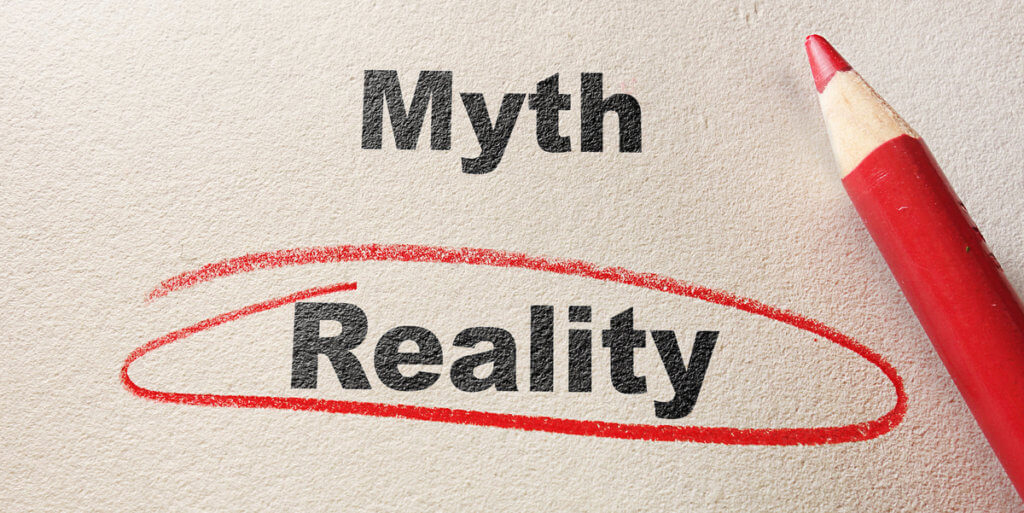
4 Agile Myths and how to avoid them
In the past, I used to kick off most Agile capability sessions with some common Agile myths. I rarely do this now as so many of them have been debunked and most participants enter the room with an understanding that surpasses this need. However, in the course of my day to day coaching and training, I’m seeing some myths make their way into the conversation.
Here’s what I’m hearing, and what you can do about them if you hear them too.
Myth 1. It’s all about Mindset
Mindset plays a part, but as anyone working in an Agile team knows, we need so much more. An Agile mindset is a great start, but needs to be backed up with practices and support for these practices. For me, this starts with asking what environment will allow people to thrive and achieve the results they are looking for. What behaviours do we need to see? This enables the creation of an environment that rewards these new behaviours and makes it easy for people to change their behaviour.
What to do: Do an environment check-in. Working in an agile way means collaborating. Have you created an environment where that’s possible? How far do people have to travel to collaborate? Do your tech collaboration tools work well? Get this right, and you will notice you’ve achieved the elusive Agile Mindset. <Collaborate>
Myth 2. Just send everyone on training
Building agile capability is important, but without support from the environment you have created (see Myth 1) and follow-up coaching, the training could be wasted. On average, participants remember 11% of what they learn in live trainings – mostly because the average workplace does not support their new skills, so participants go back to what they were doing beforehand.
What to do: Still do training – just ensure it’s supported. I’m a big fan of training and I’m a bigger fan of being clear on the goals of the training, with plenty of support ready for participants when they return to the work environment. Formal training is great, but peer to peer training is highly effective. Not only because we are more likely to listen to someone we know and trust, but when we are learning from each other, we have created an environment of continuous learning and improvement. A sure-fire way to ensure Agile success! <Improve>
Myth 3. Working software is the only measure of progress
This may be in the manifesto but it’s a myth. There is plenty of software that works out there (remember ‘Clippy’ the Office Assistant?), but it doesn’t mean it’s valuable. Value is so much more important, as well as it’s connection to the ‘Why’ of the work. While myths may not feature as much in my training sessions, we always take time to ensure we are connected to the ‘Why’ of Agile. This allows us to check-in throughout the training to ensure it’s valuable.
What to do: Create feedback loops. When we break work up into small slices we create feedback loops, allowing us to check in regularly. Something that may have been valuable a month ago might not be as valuable now. We may have learned something in the process of designing and building that means more additional work that may erode any planned value. A question we should never get tired of asking ourselves on a daily basis is: Is what we’re working on valuable? Is it STILL valuable? <Deliver>
Myth 4. Agile doesn’t work everywhere
It does. It really does. This isn’t the over enthusiastic Agile Coach speaking here, but rather the pragmatic human who passionately believes that the mindset, values and behaviours of Agile work EVERYWHERE. Agile is not a process or technique but an approach that encompasses mindset and principles, supported by specific tools, techniques and practices. Specific practices and techniques don’t work everywhere but that goes for just about anything. Pastry baking techniques aren’t particularly useful when cooking a roast, but the overall principles of cooking will always apply.
What to do: Ask the right question. If you’re wondering if Agile will work for a particular project, initiative or team scenario you’re asking the wrong question. How about asking: “how will adopting an agile mindset work here?” Then, ask what specific techniques could be used to ensure success. These techniques may be scrum, design thinking, Kanban etc.
Conclusion
Myths can be the stuff of legend. Stories passed down from generation to generation, morphed with time and wear, often taking on new attributes as a result of repeated use (and mis-use). As we evolve our ways of working, we will continuously improve and grow. At the same time, we also risk developing ideas and truths that work against us, forming new beliefs that take away from our success with Agile, rather than adding to it.
Over to you! The myths outlined here are a summary of the themes I’ve noticed. What are you noticing? What are you doing about it? How are you positively contributing to an effective way of working and outstanding results for your organisation? Feel free to share via your favourite social media platform!

